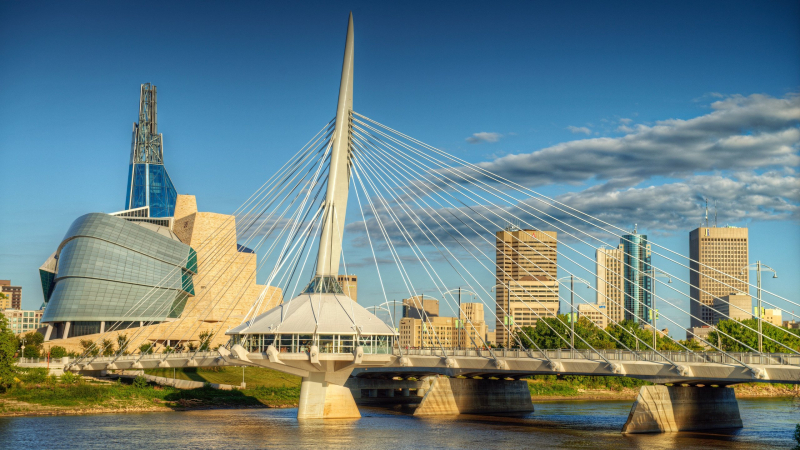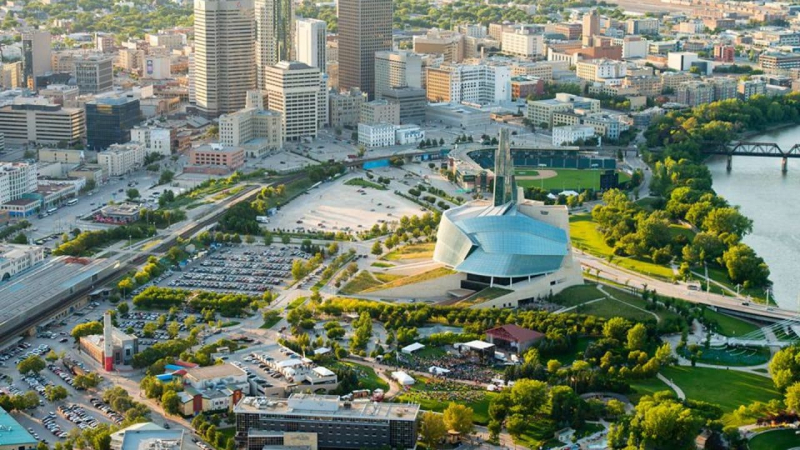Winnipeg
The largest capital city in the Canadian province of Manitoba is Winnipeg. It is located close to the longitudinal center of North America, at the junction of the Red and Assiniboine rivers. In terms of population, Winnipeg was the sixth-largest city in Canada as of 2021, with a city population of 749,607 and a metropolitan population of 834,678.
The name of the city, which is derived from Western Cree terms for muddy water, is derived from the neighboring Lake Winnipeg. The area, which is the traditional homeland of the Anishinabe (Ojibway), Ininew (Cree), Oji-Cree, Dene, and Dakota, as well as the birthplace of the Métis Nation, served as a trading hub for Indigenous peoples long before the arrival of European settlers. In 1738, French traders erected the first fort there. The Red River Colony's Selkirk settlers later established a city, the core of which was incorporated as the City of Winnipeg in 1873.
Winnipeg is a railway and transportation hub with a varied economy and is referred to as the "Gateway to the West." The Festival du Voyageur, the Winnipeg Folk Festival, the Jazz Winnipeg Festival, the Winnipeg Fringe Theatre Festival, and Folklorama are just a few of the annual festivals held in this cosmopolitan metropolis. The Pan American Games were first held in Canada in 1967 at Winnipeg. The Winnipeg Blue Bombers (Canadian football), Winnipeg Jets (ice hockey), Manitoba Moose (ice hockey), Valour FC (association football), and Winnipeg Goldeyes are some of the professional sports teams that call it home (baseball).
Population: 749,607

















